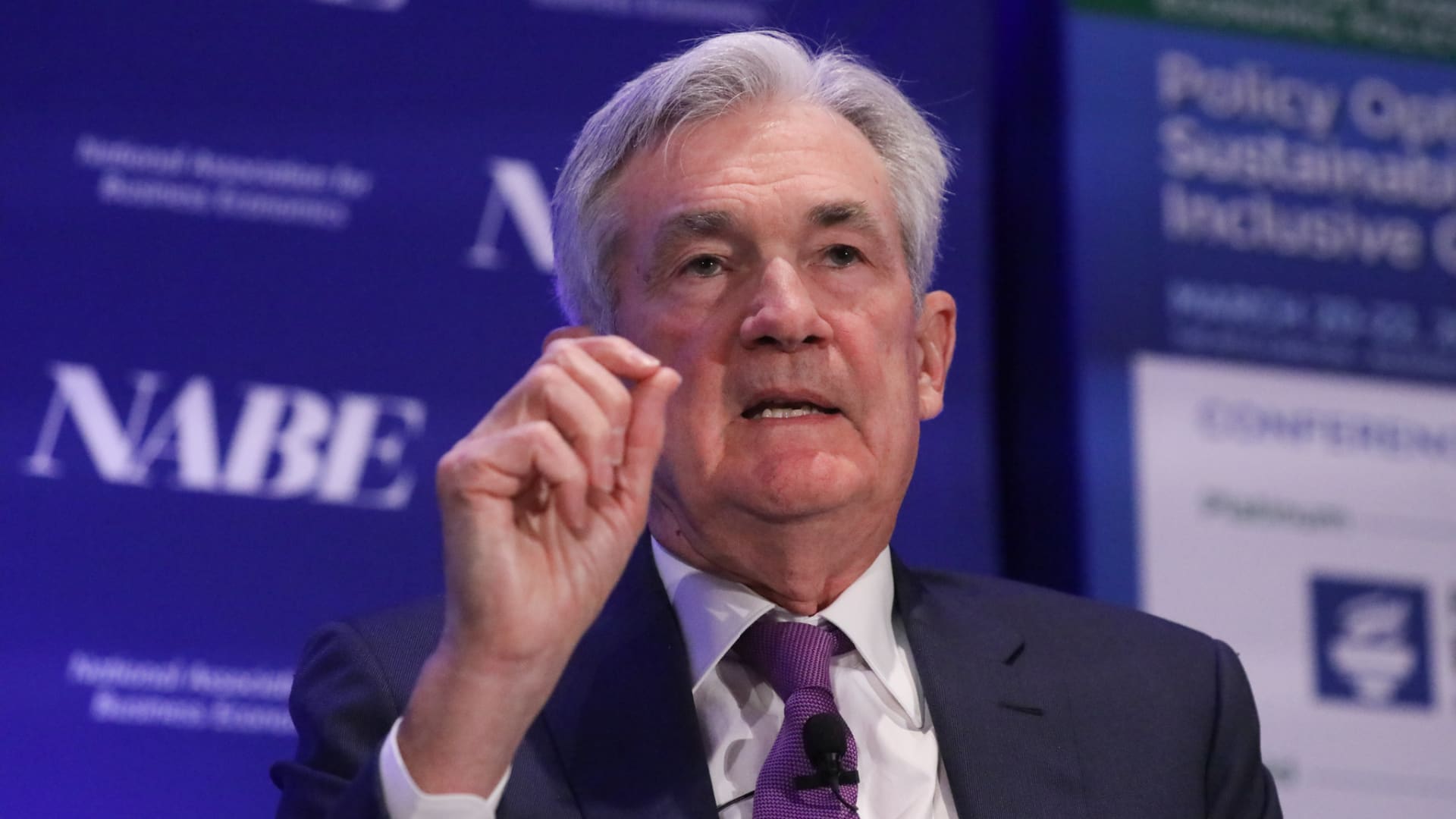The Federal Reserve is tasked with slowing the U.S. economy enough to control inflation but not so much that it tips into recession.
Financial markets expect the central bank on Wednesday to announce a half-percentage point increase in the Fed’s benchmark interest rate. The fed funds rate controls the amount that banks charge each other for short-term borrowing but also serves as a signpost for many forms of consumer debt.
Doubts are rising about whether it can pull it off, even among some former Fed officials. Wall Street saw another day of whipsaw trading Monday afternoon, with the Dow Jones Industrial Average and S&P 500 rebounding after being down more than 1% earlier in the session.
“A recession at this stage is almost inevitable,” former Fed vice chair Roger Ferguson told CNBC’s “Squawk Box” in a Monday interview. “It’s a witch’s brew, and the probability of a recession I think is unfortunately very, very high because their tool is crude and all they can control is aggregate demand.”
Indeed, it’s the supply side of the equation that is driving most of the inflation problem, as the demand for goods has outstripped supply in dramatic fashion during the Covid-era economy.
After spending much of 2021 insisting that the problem was “transitory” and would likely dissipate as conditions returned to normal, Fed officials this year have had to acknowledge the problem is deeper and more persistent than they acknowledged.
Ferguson said he expects the recession to hit in 2023, and he hopes it “will be a mild one.”
Hiking and ‘the recession that comes with it’
That sets up this week’s Federal Open Market Committee as pivotal: Policymakers not only are almost certain to approve a 50-basis-point interest rate hike, but they also are likely to announce a reduction in bond holdings accumulated during the recovery.
Chair Jerome Powell will have to explain all that to the public, drawing a line between a Fed determined to crush inflation while not killing an economy that lately has looked vulnerable to shocks.
“What that means is you’re going to have to hike enough to maintain credibility and start to shrink the balance sheet, and he’s going to have to take the recession that comes with it,” said Danielle DiMartino Booth, CEO of Quill Intelligence and a top advisor to former Dallas Fed President Richard Fisher while he served. “That’s going to be an extremely difficult message to communicate.”
The recession chatter on Wall Street has intensified a bit lately, though most economists still think the Fed can tighten inflation and avoid a crash landing. Market pricing indicates this week’s increase of 50 basis points is to be followed by a hike of 75 basis points in June before the Fed settles back into a slower pace that eventually takes the funds rate to as high as 3% by the end of the year.
But none of that is certain, and it will depend largely on an economy that contracted at 1.4% annualized pace in the first quarter of 2022. Goldman Sachs said it sees that reading dropping to a 1.5% decline, though it expects second-quarter growth of 3%.
Fears of bad timing
There are “growing risks” in the economy that could derail the Fed’s plans, said Tom Porcelli, chief U.S. economist at RBC Capital Markets.
“For starters, while everyone seems very focused on here and now data/earnings that seem to suggest all is fine at the moment, the problem is cracks are building,” Porcelli said in a note. “Moreover, this is all happening as inflationary pressures are quite likely to slow — and possibly slow more than seems appreciated at the moment.”
Monday brought fresh signs that growth at least could be slowing: The ISM Manufacturing Index for April decreased to 55.4, indicative of a sector still expanding but at a reduced pace. Perhaps more importantly, the employment index for the month was just 50.9 — a reading of 50 indicates expansion, so April pointed to a near-halt in hiring.
And what of inflation?
Twelve-month readings are still registering the highest levels in about 40 years. But the Fed’s preferred measure saw a monthly gain of just 0.3% in March. The Dallas Fed’s trimmed mean, which throws out readings at either end of the range, tumbled from 6.3% in January down to 3.1% in March.
Those kinds of numbers conjure up the worst fears on Wall Street, namely that a Fed way behind the curve on inflation when it began now may be as recalcitrant when it comes to tightening.
“They’re going to reiterate, ‘Look, we’re going to be data-sensitive. If the data changes, we’ll change what we’re expected to do,'” said James Paulsen, chief investment strategist at The Leuthold Group. “There’s certainly some slower real growth going on. It’s not falling off a cliff, for sure, but it’s moderating. I think they’ll be more sensitive to that down the road.”
